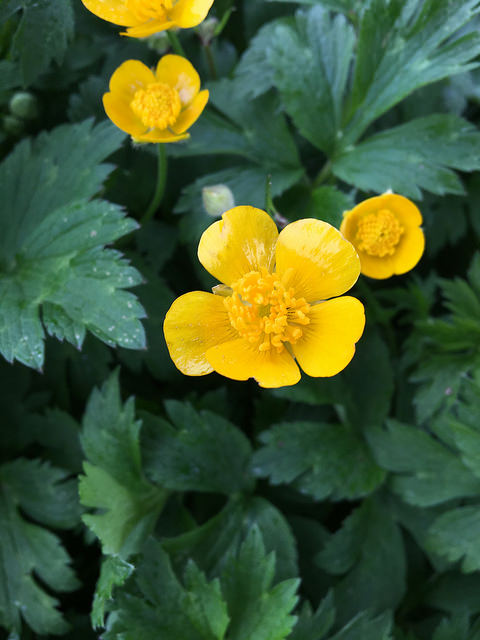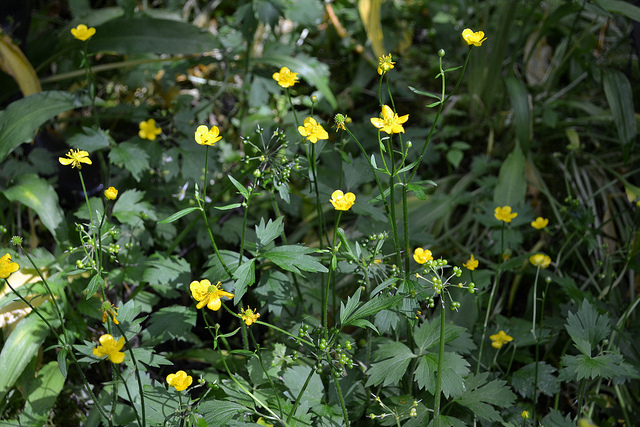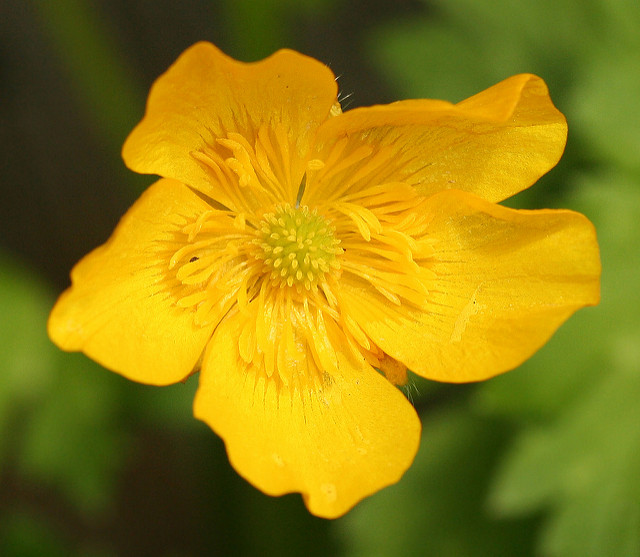Creeping Buttercup (Ranunculus repens) Weed Management
Ranunculus repens the Creeping Buttercup facts.This perennial plant has small yellow flowers. It is part of the Ranunculaceae buttercup family and is native to Asia, Europe and Northwestern Africa. Other names for the creeping Buttercup are creeping Crowfoot and steadfast.
This plant is a herbaceous perennial plant that will grow up to15 to 50 cm tall. The creeping Buttercup is an invasive weed that can sometimes be difficult to control and has the ability to cover large areas very fast. It can take over and smother lawns and can completely take over plants that are in your beds.
The way the plant grows is it will send out runners that will grow across the surface of open soil or lawns or in beds. The root system becomes very tough and will anchor in the ground very well. Along the runners it will send small roots down several points when it is creeping across the ground to help anchor it in place and to provide nutrients and moisture.
The Creeping Buttercup has the ability to grow from small pieces of stems or roots that were left behind in the soil. Originally sold as an ornamental plant around the world has now taken over and become an invasive species. Ranunculus repens is poisonous but when dried out the poison is lost.
It tends to grow in open fields and pastures and just loves damp, wet soils. The plant produces a glossy yellow flower and are very pretty, the glossy appearance is caused by a upper surface that is smooth on the pedal and can act like a mirrow that helps attract pollinating insects. Flowering time for the creeping buttercup is June to August.
The Creeping Buttercup likes to grow and inhabit areas that are low lying Such as fields, pastures and just loves growing in wet soil. This can include poorly drained areas that do not have proper runoff but they also can become a bad invasive weed in lawns that are well watered. 
The Creeping Buttercup has a long root system that will penetrate deeply into the ground and will branch from each one of the leaf nodes. Being that it is a well developed plant it has sub lateral runners that will move across the surface of the soil or lawn and develops a strong anchoring root system.
This helps the Creeping Buttercup plant stay firmly grounded while spreading a network of all the roots stems and forms a matt. The reproduction of the plant is typically done from seeds with a combination of moist surrounding soil conditions. The creeping buttercup even though it does produce seeds it spreads mainly with low growing groundcover by its runners.
It does produce seeds they will typically end up on the ground and either be eaten or destroyed by microbes, but birds can also eat the seeds and spread them far distances from the original plant. If stems or small section of the plant have fallen away they may start to establish and to begin form a new plant.
Control or managing Creeping Buttercup (Ranunculus repens)
- First thing in spring use a wire to the rake and clean up the plant by pulling the runners-up. Use a lawnmower or weedeater to remove the plant. Hand forks can also help to lift up the roots and pull it carefully out of the ground, make sure you get every piece of the roots and stems as they can grow back.
- Keep your lawn healthy with proper weed treatment and fertilizing. Keep a regular routine for mowing and watering being careful not to over water and this will help prevent the creeping Buttercup from reappearing in your lawn.
- Latter part of the year in the autumn aerate the landscape to help improve drainage.
- In small areas use a hand trowel to help dig out the Creeping Buttercup.You will have to repeat this process several times throughout the season to help gain full control over the invasive weed.
- If there are any open or bare areas of soil during your growing season you want to make sure that you do some regular hoeing. Shallow hoeing will allow you to cut out the roots of the creeping Buttercup but will not allow you to pull the seeds and other pieces up to the surface where they can germinate.
- Control creeping Buttercup by using lawn weed killers. Scotts lawn builder which has a feeding and weed control blend, doff lawn weeder. Apply the chemical control in the spring when the plants are new and have strong vigorous growth. You may have to repeat treatment to gain control.
- Regular cultivation will help gain control over the creeping Buttercup during the season and will stop the weed from seeding and taking hold.
- After controlled you can apply thick layers of organic mulch into your beds that the weeds have been taking care of. You can also use wood chipping's or mushroom compost.
- If the weed is on your borders and your other plants are around you may use a weed killer containing glyphosate, such as Scotts Roundup. You must protect your nearby plants by shielding them with plastic sheets or putting a bucket over top.
- Non-selective herbicides can be used to help control and kill the creeping Buttercup weed.If the weed is on your borders and your other plants are around you may use a weed killer containing glyphosate, such as Scotts Roundup. Because these plants can kill all types of plants you want to make sure that you try to stay away from the surrounding plants and the ones that you do not want to kill.You can protect your nearby plants by shielding them with plastic sheets or putting a bucket over top.


